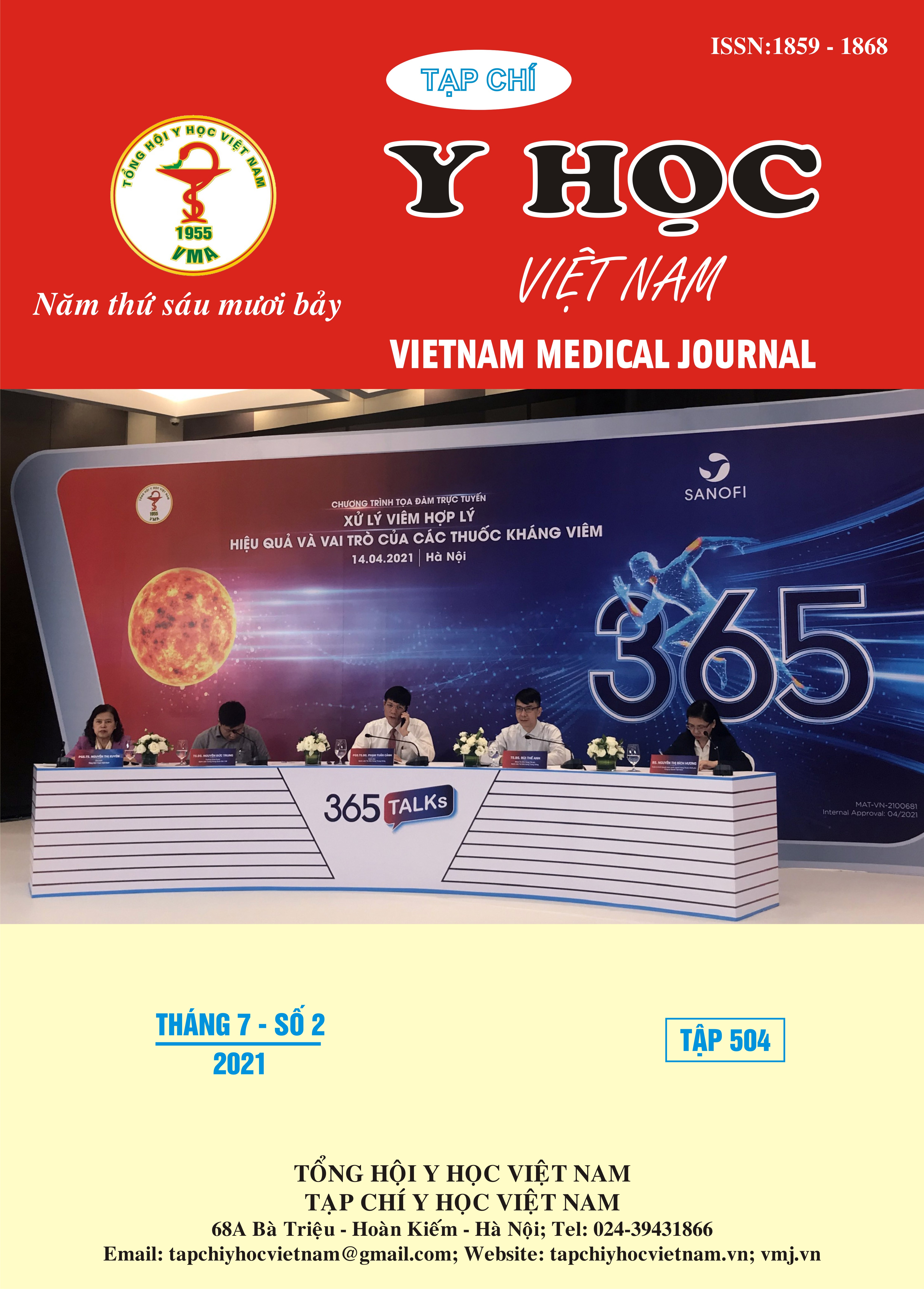CLINICAL AND RADIOGRAPHIC FEATURES OF PATIENTS WITH REVISION HIP ARTHROPLASTY
Main Article Content
Abstract
Hip arthroplasty for the treatment of hip joint’s diseases has been increasingly performed. However, some are not succesful and have revision. Aim: To evaluate clinical and radiographic features of patients with revision hip arthroplasty. Patients and method: A cross-sectional descriptive study of 50 patients who were indicated for revision hip replacement due to aseptic hip prosthesis failure. Results: There were 41 patients underwent total hip replacement (82%) and 9 patients underwent partial hip replacement (18%) (p<0,001). The mean time between the last surgery and the next revision surgery was 75,8 ± 68,1months. The time between two hip replacements of cemented and non-cemented hip prosthesis was 121,0 ± 68,6 and 37,3 ± 37,6 months, respectively (p<0,001). The reasons of failure after hip replacement were aseptic loosening (72%), dislocation (20%), peri-prosthesis fracture (4%) and femoral stem fracture (4%). Hip function of all patients was poor. Radiography showed that 90% of patients had femoral and/or acetabular bone loss. Conlusion: Aseptic loosening was the most common cause of revision hip replacement.
Article Details
Keywords
revision hip replacement
References
2. Crawford, R.W. and D.W. Murray, Total hip replacement: indications for surgery and risk factors for failure. Annals of the Rheumatic Diseases, 1997. 56(8): p. 455.
3. Malchau, H. and P. Herberts, Prognosis of total hip replacement. Int J Risk Saf Med, 1996. 8(1): p. 27-45.
4. Mushtaq, N., et al., Radiological Imaging Evaluation of the Failing Total Hip Replacement. Frontiers in surgery, 2019. 6: p. 35-35.
5. Abu-Amer, Y., I. Darwech, and J.C. Clohisy, Aseptic loosening of total joint replacements: mechanisms underlying osteolysis and potential therapies. Arthritis research & therapy, 2007. 9 Suppl 1(Suppl 1): p. S6-S6.
6. Dobzyniak, M., T.K. Fehring, and S. Odum, Early failure in total hip arthroplasty. Clin Orthop Relat Res, 2006. 447: p. 76-8.


